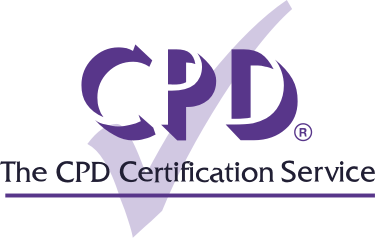All Engineering Professionals make a commitment to maintaining their competency in order to meet both current and future challenges within their industry. This article provides a brief overview of CPD courses for Engineers, some simple CPD examples, how to record your CPD, as well as the professional development requirements.
What is the importance of CPD for Engineers?
Civil Engineers, Structural Engineers, Chartered Engineers, Engineering Technicians, ICT Technicians and Incorporated Engineers all make a commitment to maintaining their competency through ongoing CPD. Continuing Professional Development, or CPD, is a fundamental part of any career in engineering – ensuring 'professionally registered and active' engineers keep up to date by constantly learning and improving, both formally and informally, beyond any initial education and training.
The activities you undertake depend on where you are in your career and what you’re looking to achieve, which will vary in relation to your circumstances, needs and objectives. CPD examples for engineering professionals covers a wide range of areas. Topics may include the need to keep up to date with changes to design codes and standards, changes to construction methods and keeping abreast of the latest building standards legislation.
The Engineering Council states that all members of professional engineering institutions within the engineering sector have obligations to undertake CPD. The professional engineering institutions work alongside the Engineering Council to advise on CPD, by providing guidance, resources and mentoring programmes.
CPD Examples for Engineering Professionals
CPD is any learning activity that enables an engineering professional to develop their competencies relevant to their profession. Continuing Professional Development is a holistic activity, not just relating to technical knowledge, but should contain an appropriate balance of all professional skills. Common CPD examples include – seminars, educational events, online E-Learning, private study, work experience and other types of work-based learning.
CPD must be relevant to the type of work being undertaken by the engineer and should be able to demonstrate necessary steps taken to remain competent to their chosen area of speciality. It can typically be divided into six broad types:
- Work-based learning & development
- CPD Seminars
- Professional body learning events
- Further self-directed learning
- Mentoring and coaching
- Industry-related education
Not all learning takes place within a group or facilitator situation. For more information on the various types of CPD, such as structured, self-directed learning please visit CPD explained.
Who are the governing bodies for Civil and Structural Engineers?
A commitment to Continued Professional Development is a requirement to be a member of many professional engineering organisations including;
- The Engineering Council
- Chartered Institute of Building Services Engineers (CIBSE)
- Institution of Civil Engineers (ICE)
- Institute of Mechanical Engineers (IMechE)
- Institute of Structural Engineers (IStructE)
- Institute of Engineering and Technology (IET)
The Engineering Council is Britain’s regulatory authority for registration of Chartered and Incorporated engineers and engineering technicians.
Institution of Structural Engineer’s (IStructE) CPD Requirements
The Institution of Structural Engineers is the world’s leading professional body for qualifications and standards in structural engineering with over 27,000 members operating across 105 countries. IStructE acknowledges that CPD can be undertaken in a number of different ways. 30 hours per year of Continuing Professional Development is the expectation for structural engineering professionals, however, IStructE has recognised that some members may have periods where they need not undertake their normal level of structural engineering CPD.
The expectation is 90 hours over a period of three years to take into account times of reduced CPD. If there is a valid reason why you cannot gain 30 hours of CPD in a given year – or you do not manage to gain 90 hours over three years – then this will be taken into account during assessment. If a member does not comply with IStructE CPD policy, i.e. does not submit an appropriate CPD record, they may ultimately be removed from membership.
Institution of Civil Engineers (ICE) CPD Hours Requirements
The Institution of Civil Engineers is an independent professional association for civil engineers and a charitable body in the United Kingdom. As an ICE member, you will be required to manage your own Continuing Professional Development. This means being able to send an annual record of your past year’s ICE CPD and your plans for the year ahead. ICE CPD Hours Requirements state;














